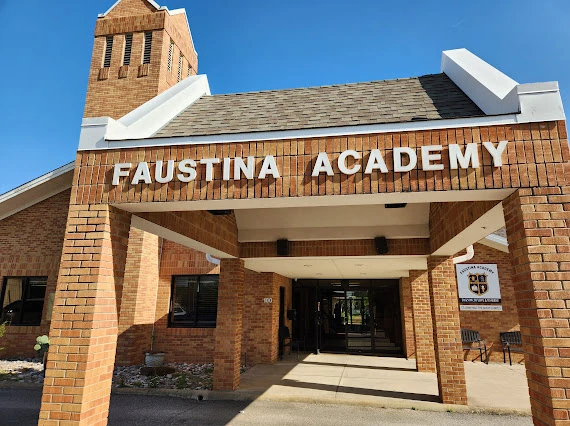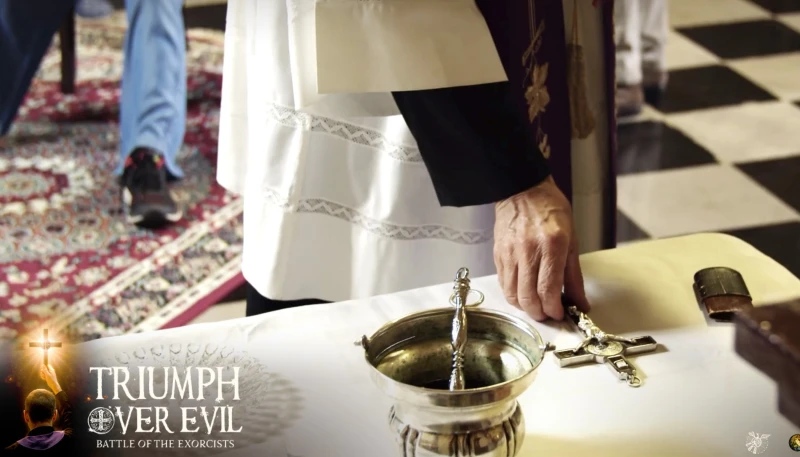
| Picture of the day |
|---|

|
|
U.S. Marines raising the American flag on Mount Suribachi during the Battle of Iwo Jima. Today is the United States Marine Corps birthday on which it turns 250 years old.
|

| Picture of the day |
|---|

|
|
U.S. Marines raising the American flag on Mount Suribachi during the Battle of Iwo Jima. Today is the United States Marine Corps birthday on which it turns 250 years old.
|


CNA Staff, Oct 30, 2025 / 06:00 am (CNA).
As the harmful effects of smartphone use on children become more well known, one school in the Dallas-Fort Worth metroplex is partnering with parents to enforce a no-social-media policy and witnessing students flourish as a result.
Faustina Academy, a K–12 private, independent Catholic school in Irving, Texas, asks parents to formally commit to a school policy of keeping their kids socia-media-free while enrolled.
In addition to asking families to commit to prohibiting TikTok, Instagram, Snapchat, and CapCut, Faustina students have never been permitted to have phones with them during school hours.
Student drivers must leave their phones in their cars during the school day and younger high school students who need phones for after-school activities turn them in to the office in the morning and pick them up after school and can only take them out once they are off campus.
In the school’s early days, years before the smartphone’s launch, Christina Mehaffey, principal since the school’s founding in 2003, told CNA she paid attention to technology trends, researching MySpace and other early social-networking sites available on desktop or laptop computers.
She concluded the sites “opened doors to inappropriate material” such as pornography and violence and “tweaked the tech policy to be more restrictive” over the years by informally asking parents to keep their children off devices at home (they were never allowed to have phones during the school day). She also asked parents to limit their children’s video game time.
In 2017, after seeing the effects of years of smartphone use and social media apps on the children, Mehaffey began asking parents to prohibit social media use among students.
She held two weeks of mandatory parent meetings for every grade level, discussing the harms of popular smartphone apps that were “drawing kids away from reality” and exposing them to “horrifying” content that was “right at their fingertips.”
Mehaffey brought in an IT expert to explain to both parents and students that the app and smartphone creators “intentionally” made the devices and apps addictive because “they knew kids don’t have self-control; all for the sake of making money.”
The expert told parents that kids could easily access content so harmful it was “far beyond what anyone could even imagine,” Mehaffey said.
“Parents were amazed” at what they learned, she said, and 100% were willing to verbally commit to keeping their children off social media.
Mehaffey said it was necessary that every parent “get on board” in order to address the “collective action problem, the fear of missing out” that would be present among the students if every family did not have the same policy at home.
Speaking of the overwhelming support of the parents, Mehaffey told CNA that many parents even “asked me to just make a school-wide policy prohibiting social media so they would be relieved of the burden of having to enforce the rules. A few parents said: ‘Our lives will be easier if the school makes it a policy.’”
So, in 2022, the school’s official policy became “no social media use by Faustina students.”
“Every single parent signed on,” Mehaffey said.
Heidi Maher, whose family has been at Faustina since 2020, told CNA her family already had a no-social-media policy, but when Mehaffey took the no-phone policy in school a step further and banned social media, “it was a huge blessing to me as a parent. It took that battle off the table. We have enough battles as parents. If no one else has social media, I don’t have to battle with my children.”
At previous schools her children attended, Maher said “they weren’t willing to lay down the law on more controversial social issues and they weren’t being direct enough about what being Catholic means.”

“Kids are catechized on the playground,” Maher said. “Their peers, and what their peers’ families are doing, affect them, regardless of what their teachers say.”
“My kids have grown up in one of the most liberal neighborhoods in Dallas. But when it came to education, we wanted an orthodox Catholic school,” she said.
Since the policy change, Maher said she now sees a level of innocence in her children and their friends that she has not seen in a long time.

Jane Petres, who has two daughters at the school, agreed, telling CNA she appreciates raising her family among “mostly like-minded families” and school staff whom she can trust.
“The other parents here seem very ‘with it’ and proactive,” she said of Faustina. “You can ban everything in the world, but unless the parents are enforcing it, kids are still going to be exposed to harmful things.”
She said that at a previous school, an eighth-grade girl became involved with a 45-year-old man (who she thought was a teenage boy) through social media, and rather than recognizing the dangers and changing their policies, the school hushed it up.
Every year, Faustina hosts parent orientations where Mehaffey tells them that “our purpose on earth is to get people to heaven. It has to be in everything we do; in our choices, friendships, our technology use, everything.”

“We want a school where everyone is on the same page, but we’re open to all,” Mehaffey said. “If someone comes in who isn’t Catholic, they have to commit to doing things the way the school does. Not only the technology policy but also prayers, the Mass, all of it. We’re going to teach the truth.”
Read More

CNA Staff, Oct 28, 2025 / 07:00 am (CNA).
Who is the devil? What is an exorcism? How do you protect yourself from demonic attacks? These are some of the questions a new film titled “Triumph Over Evil: Battle of the Exorcists” aims to answer.
Approved by the International Association of Exorcists, a prominent pontifical association, “Triumph Over Evil” is the first authoritative documentary to delve into the various aspects of demonic possession and exorcism as well as the how the Catholic priesthood and the Blessed Virgin Mary take part in the battle against evil.
The film, which includes never-before-seen commentary from Vatican exorcist Father Gabriele Amorth and others, will be in theaters for one day only on Oct. 30.
Giovanni Ziberna, a former atheist who converted to Catholicism, directs the film.
Despite growing up in an atheist household, Ziberna told CNA in an interview that he always felt like God existed.
“The beauty of creation always made me feel that there had to be something more,” he said.
The Italian film director shared that it was not until he and his wife were asked to work on a project on the life of St. Veronica Giuliani — an Italian nun and mystic who belonged to the Capuchin Poor Clares — that he first encountered God. He explained that after receiving a blessing for protection from the priests involved in the project, he began to feel a “fire starting from my feet and rising up all over my body.”
“This fire burned away all my preconceived ideas, my pride, my ego, what I thought about God,” he said. “In that moment, I realized that it was God who humbled himself to embrace us in our smallness and misery and also that fire lit in me the desire to conversion, to be baptized; and the desire to know the faith and the Scriptures.”
From that point on, he and his wife started their faith journey. They began receiving the sacraments, getting baptized as well as baptizing their children, and having their civil marriage recognized by the Catholic Church.
After becoming Catholic, Ziberna had the opportunity to assist in the ministry of exorcism, where he served as a firsthand witness. This experience inspired him to create the film as a way to show the truth about exorcisms, in contrast to what Hollywood depicts.
He explained that there is a lot of “misinformation” surrounding this topic, as well as a lack of “theological background,” making it “easy to fall in the devil’s trap.”
Through the film, Ziberna said he wants to “show what a real exorcism is” and how it serves as a “spiritual moment full of light where God’s power wins over darkness.”
Ziberna said he hopes viewers will come away with more knowledge, a desire to “stay closer to God,” and a reminder that the “only real winner over evil is God.”
Read More